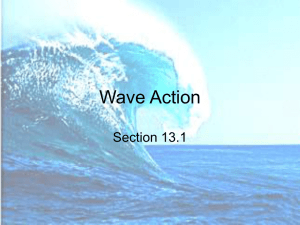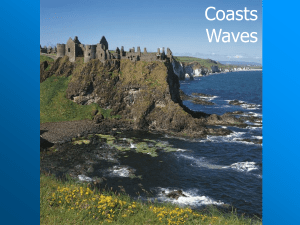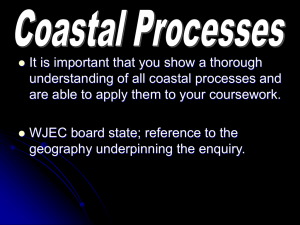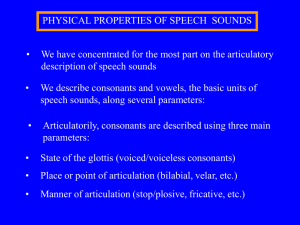OCEAN WAVES - Moore Middle School
advertisement
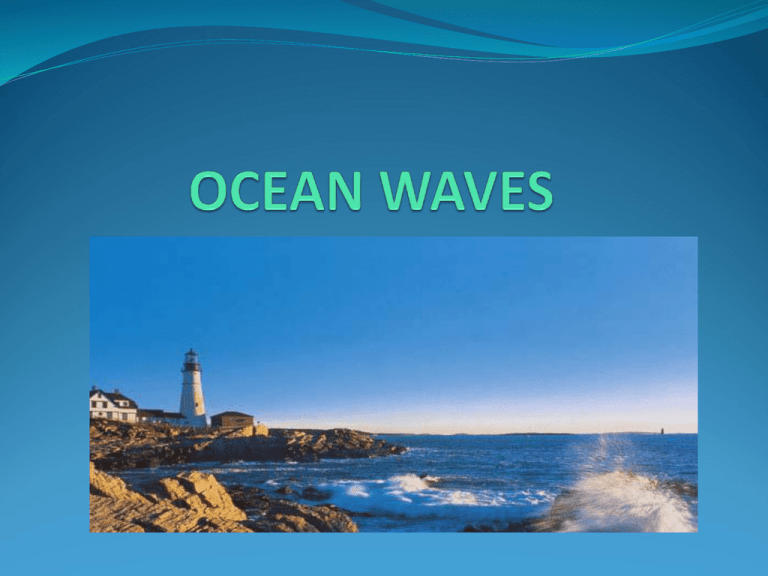
How Waves Form When you watch the surfer's wave crash onto the beach, you are seeing the last step in the process of the wave's development. The process begins with wind. Most waves form when winds blowing across the water's surface transmit their energy to the water. A wave is the movement of energy through a body of water. How Waves Form Although waves may appear to carry water toward shore, the water does not actually move forward in deep water. If it did, ocean water would eventually pile up on the coasts of every continent! The energy of the wave moves toward shore, but the water itself remains where it was. Wave DO NOT carry water, they carry energy. How Waves Form Waves start in the open ocean. The size of the wave depends on the strength of the wind and on the length of time it blows. A gentle breeze creates small ripples on the surface of the water. Stronger winds create larger waves. How Waves Form The size of the wave also depends on the distance over which the wind blows. Winds blowing across longer distances build up bigger waves. PARTS OF A WAVE The name for the highest part of a wave is the crest. The horizontal distance between crests is the wavelength. Long, rolling waves with lots of space between crests have long wavelengths. Short, choppy waves have shorter wavelengths. Waves are also measured by their frequency, the number of waves that pass a point in a certain amount of time. PARTS OF A WAVE The name for the lowest part of a wave is the trough. The vertical distance from the crest to the trough is the wave height. The energy and strength of a wave depend mainly on its wave height. How Waves Change Near Shore In deep water, waves usually travel as long, low waves called swells. As the waves approach the shore, the water becomes shallower. The bottoms of the waves begin to touch the sloping ocean floor. Friction between the ocean floor and the water causes the waves to slow down. As the speed of the waves decrease, their shapes change. How Waves Change Near Shore Near shore, the wave height increases and the wavelength decreases. When the wave reaches a certain height, the crest of the wave topples. The wave breaks onto the shore, forming surf. WAVE ACTION Comprehension Check 1. 2. 3. 4. 5. Describe how ocean waves form. What is the highest part of the wave? What is the lowest part of the wave? What is the distance between two crests or troughs What is the vertical distance between a crest and trough?

